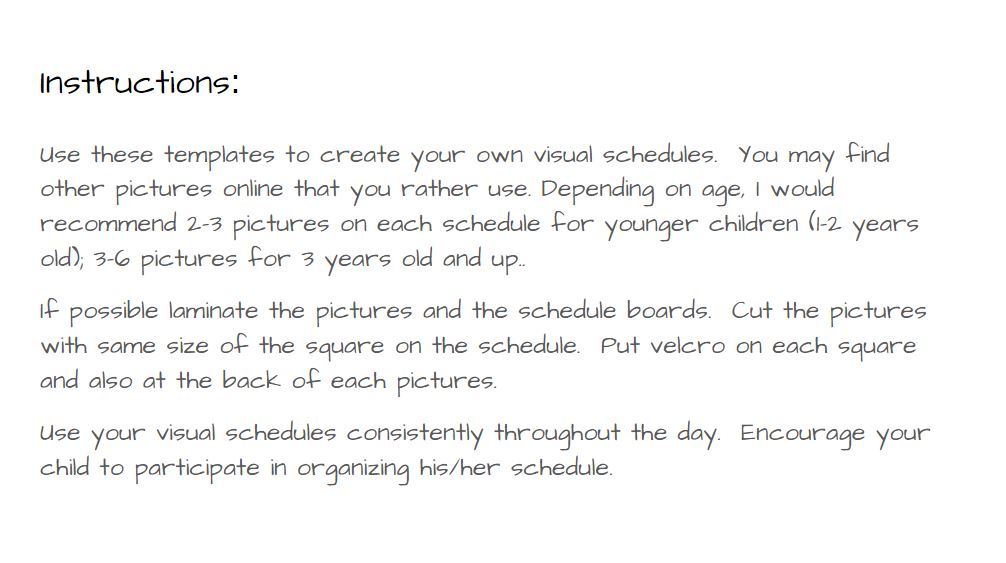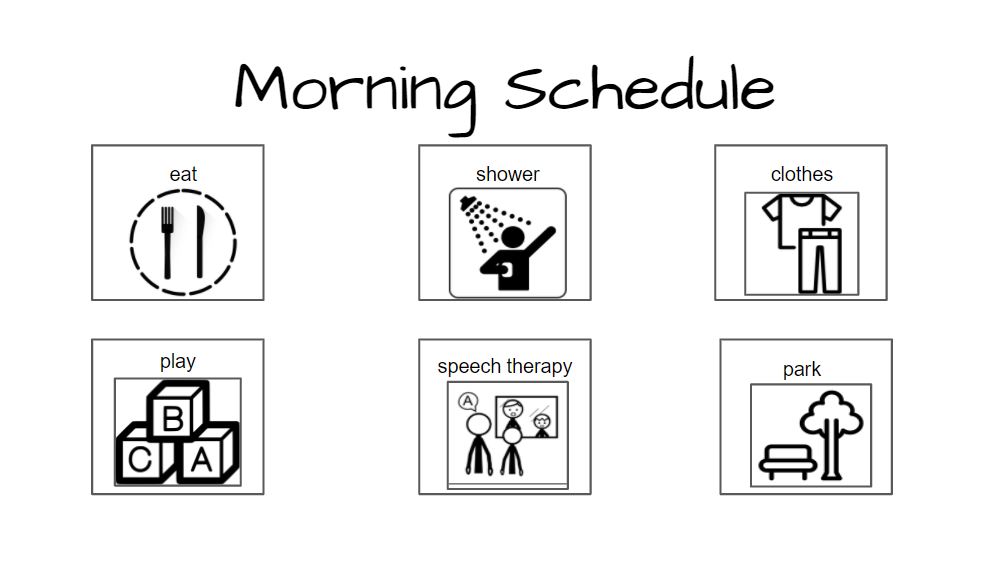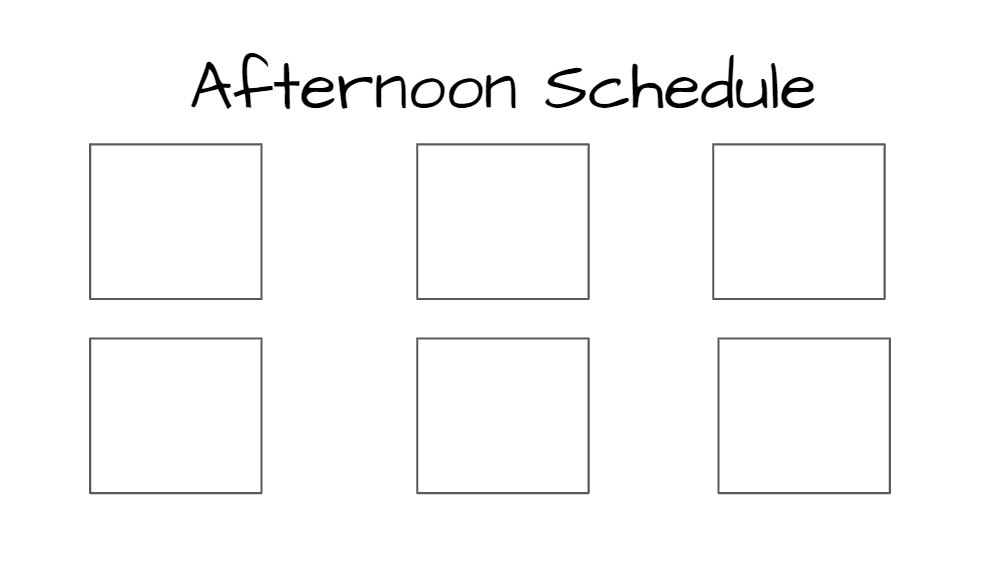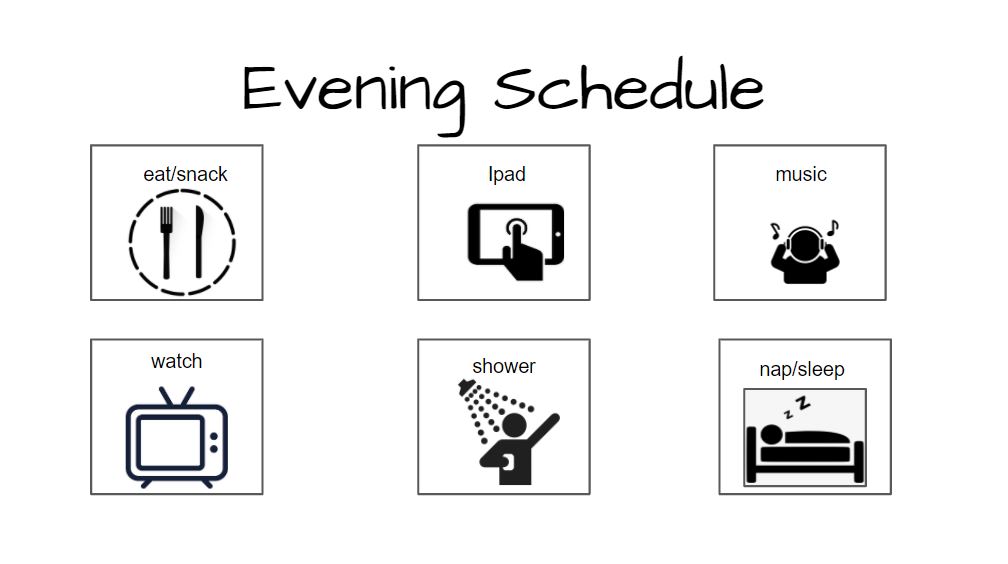There are different types of visual supports. They come in the form of photographs, drawings, symbols, labels, manipulatives, real objects, and other supplemental images. You create a daily work flow with these objects. Basically you show them to your child so they know what they are going to be doing. After an activity is finished you can let your child cross it off the list or pull it off the board or however you want to indicate that the activity is over. This lets your child understand and feel the flow of the days, the activities required and progress made.
Here are some types of visual supports: visual boundaries, visual cues, and visual schedules. This visual schedule is one type of visual support that can facilitate the child’s learning of new skills. It helps them understand what they need to do and where things belong. It also helps establish routines and enhance vocabulary.
There are different kinds of visual schedules for different purposes. Here are some components that need to be considered when creating a visual schedule:
Form of representation – Type of photographs/pictures (Are you going to use real pictures, colorful pictures or basic black and white?), words/phrases, functional objects and representational objects.
Length of the schedule – Is it for a specific activity? Is it for half day or full day?
Method of manipulating the schedule – Will your child put a check mark that will denote the activity is finished. Or does your child place the cue (picture) in a “finished” location when activity is finished.
Location of the schedule – Is the schedule stationary in one location or is it portable?








